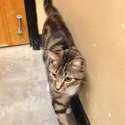How to Prevent Heatstroke
Sun + humidity = heatstroke Everyone knows that the inside of a car on a hot summer’s day can be lethal. But Fido needs you to know more than that to keep him safe in the deadly sun. Days above 90 degrees, especially with high humidity, are inherently dangerous for your pet. Humidity interferes with an animal’s ability to rid themselves of excess body heat. When we overheat we sweat, and when the sweat dries it takes excess heat with it. Our four-legged friends only perspire around their paws, which is not enough to cool the body. To rid themselves of any excess heat, animals pant. Air moves through the nasal passages, which picks up excess heat from the body. As it is expelled through the mouth, extra heat leaves with it. Although this is a very efficient way to control body heat, it is severely limited in areas of high humidity or when the animal is in close quarters. The shape of an animal’s nasal passages can contribute to an animal’s tendency to overheat. Brachiocephalic (pug-nosed) dogs are more prone to heatstroke because it’s more difficult for them to circulate sufficient air for cooling. Over-weight dogs are also more prone to over-heating because their extra layers of fat act as insulation, which traps heat in their bodies and restricts their breathing capabilities. Age can also be a factor. Very young animals may not have a fully developed temperature regulating system, and older pets’ organ systems may not be functioning at 100 percent, leaving them prone to heat-related damage. Cracking the windows doesn’t cut it Your car can become a death trap even on a mild sunny day when temperatures can rise insidiously to well above 120 degrees. Never, ever leave your pet inside the car. If Fido can’t come with you when you get out of the car, leave him at home. Their lives are in your hands Heatstroke is a medical emergency. If you suspect your pet has heatstroke (see “Signs of Heatstroke” in box), you must act quickly and calmly. Have someone call a veterinarian immediately. In the meantime, lower the animal’s body temperature by applying towels soaked in cool water to the hairless areas of the body. Often the pet will respond after only a few minutes of cooling, only to falter again with his temperature soaring back up or falling to well below what is normal. With this in mind, remember that it is imperative to get the animal to a veterinarian immediately. Once your pet is in the veterinarian’s care, treatment may include further cooling techniques, intravenous fluid therapy to counter shock, or...









